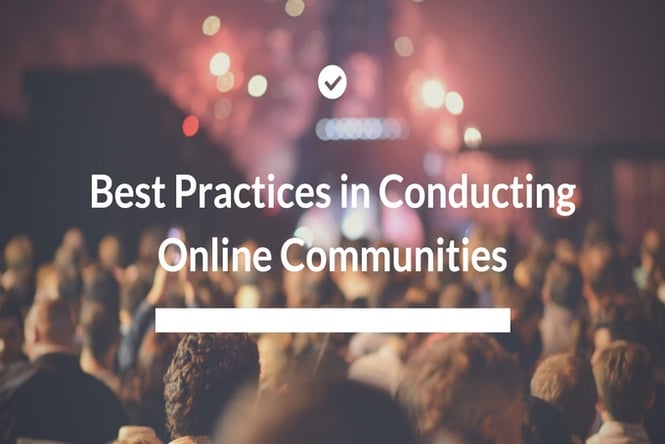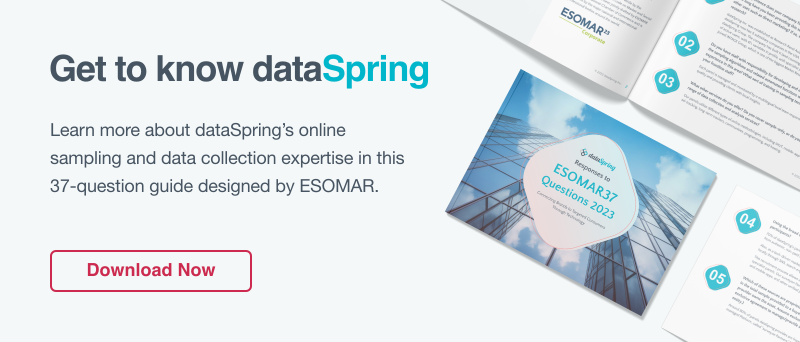
Successfully conducting online communities requires a shift in the research paradigm, moving from simply 'asking' questions, to active community 'listening' to uncover insights.
The development of online communities or MROCs (Market Research Online Communities) is a relatively recent innovation in market research to quickly taping into a consumer group to gather insights. The motivation for creating this methodology came from the desire to replicate the information generated on social networks and topic bulletin boards, but with more structure and better data gathering and analysis tools.
Online Community Benefits
Online communities offer a number of significant benefits to researchers and marketers, including:
- Longitudinal topic/experience exploration: More depth and nuance can be achieved with complex topics or long-term decision-making purchases.
- On-demand and in-the-moment feedback: Via mobile, community members can quickly respond to quick polls and inquiries, and provide feedback during a process or experience.
- Access to Quantitative, Qualitative, and Collaboration tools: Easily develop hybrid methodologies to add more depth and context to quantitative data and allow members to lead the conversation.
Feasibility
Before embarking on building an online community, it is important to think through the economics, process, and the suitability of the community topic/subject matter. Economic feasibility depends on a number of factors, most notably community use. In general, if at least one larger-scale research project isn’t conducted monthly, an online community may not make financial sense.
Another consideration is process. It takes a significant amount of work to build and maintain an online community, not to mention the planning and conducting of actual research. It is important to think realistically about how the community will be used and managed. This is where early and on-going senior management support is crucial to success.
Finally, there is the topic/subject matter. The most successful online communities are focused around brands or categories where there are high enthusiasm and interest – think Apple, Nike, and Audi or categories like golf, motorcycles, and parenting. That isn’t to say successful panels cannot be set-up among comparatively low-interest categories like office supplies or insurance. Just know that recruiting will likely be more difficult and participation rates lower. That being said, lower incidence categories (e.g., certain professions or low participation activities) often do make economic sense since individual studies can be very expensive.
Online Community Best Practices
Once the decision is made to build an online community, here are key industry best practices to help guide the process.
Set-up:
- Do your research! Check out the resources available from the likes of ESOMAR and other online publications.
- Fully investigate community panel software options to ensure the technology best meets your needs.
- Designate a dedicated resource (aka, 'panel champion') to keep things on track and help promote use across the organization.
- Start by recruiting your most enthusiastic brand/category consumers.
- Think about incentives beyond points for participation model – members can also be motivated by status and community leadership roles.
- Develop a plan to integrate insights into the organization and link them to KPIs and brand/product goals.
Usage:
- Encourage senior management participation by bringing them into the planning and design process.
- Recruit your most enthusiastic community members to help lead ongoing conversations.
- Maintain good market research standards and practice to keep data quality, but resist over-controlling panel access.
- Publish some findings back to community members and tie feedback to company developments and marketing efforts.
- Develop an ongoing omnibus to make it easy for internal groups or a brand team to field questions and access the panel.
Ongoing Management:
- Learn from what you’re doing and develop internal best practices.
- Conduct regular panel health reviews: look at the size, composition, churn, and response rates.
- Monitor community member satisfaction and actively address issues.
- Refresh panelists regularly.
- Showcase success and promote usage to senior management.
Final Words
In many ways, building a successful online community mirrors the process of developing a solid research study: engage stakeholders early in the process, focus on objectives, create a plan and – most importantly – stay flexible!


 Download Panel Book
Download Panel Book


